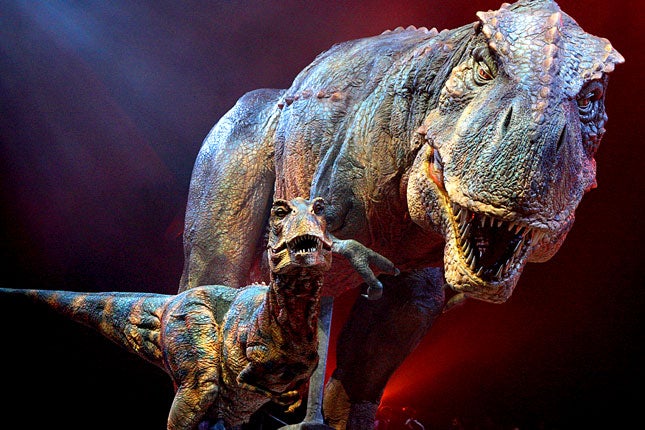New creationist museum explains how Noah managed to fit dinosaurs on the ark
The Northwest Science Museum has opened in Idaho to 'show a lot of science that's being censored to the public'

Your support helps us to tell the story
From reproductive rights to climate change to Big Tech, The Independent is on the ground when the story is developing. Whether it's investigating the financials of Elon Musk's pro-Trump PAC or producing our latest documentary, 'The A Word', which shines a light on the American women fighting for reproductive rights, we know how important it is to parse out the facts from the messaging.
At such a critical moment in US history, we need reporters on the ground. Your donation allows us to keep sending journalists to speak to both sides of the story.
The Independent is trusted by Americans across the entire political spectrum. And unlike many other quality news outlets, we choose not to lock Americans out of our reporting and analysis with paywalls. We believe quality journalism should be available to everyone, paid for by those who can afford it.
Your support makes all the difference.A new creationist museum has been opened that claims Noah brought baby dinosaurs aboard the ark because larger ones would not fit in or live as long.
The Northwest Science Museum Vision Centre, which opened its doors on 14 June, has been established to counter "mainstream science" with exhibits about life on Earth as created by God in six days 6,000 years ago, according to the Bible.
Doug Bennett, the museum's executive director, told the Idaho Statesman it was there to “show a lot of science that's being censored and not presented to the public”.
One volunteer curator was filmed presenting an exhibit to children at the museum as to how Noah could have brought dinosaurs onto the ark, agreeing with skeptics that bigger ones would not fit in.
“But yet they found a baby diploducus in Argentina — a complete skeleton, 27-inches long,” he explained.
"Noah, being the smart man he was, he's not gonna bring a big old male along, that's only going to live a short time, he’s going to bring a baby or young one along that’s gonna live longer, reproduce a lot more.”
The museum cost $10,000 (£5, 900) to open and the organisers are now hoping to raise money for a full-scale facility that would charge for admission.
"We're also looking at grants, scholarships, that sort of thing" to fund the museum, Mr Bennett said, adding that many of the items currently on display there came from the founder's personal collections.
Mr Bennett told the newspaper the museum had received a positive response from the public, except for "a flood of emails from atheists and naysayers".
Join our commenting forum
Join thought-provoking conversations, follow other Independent readers and see their replies
Comments